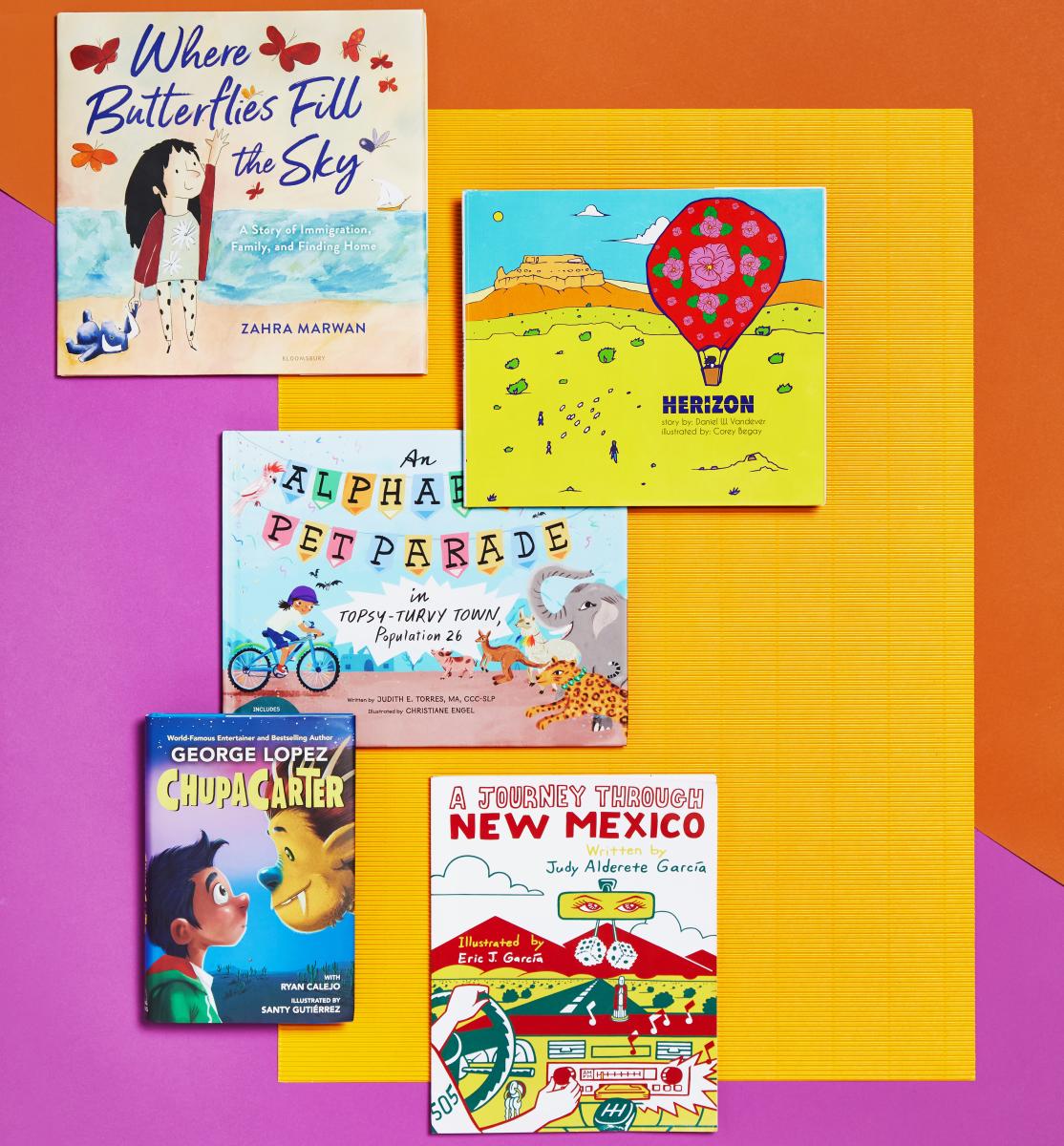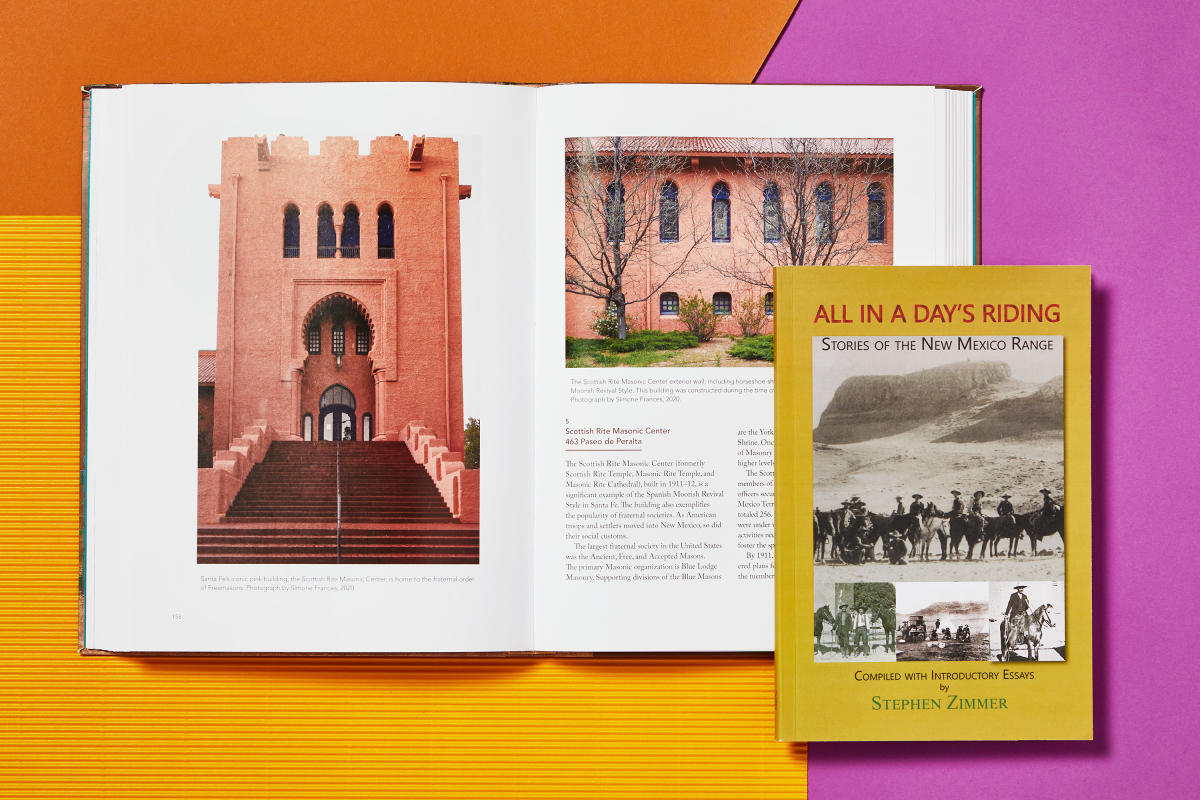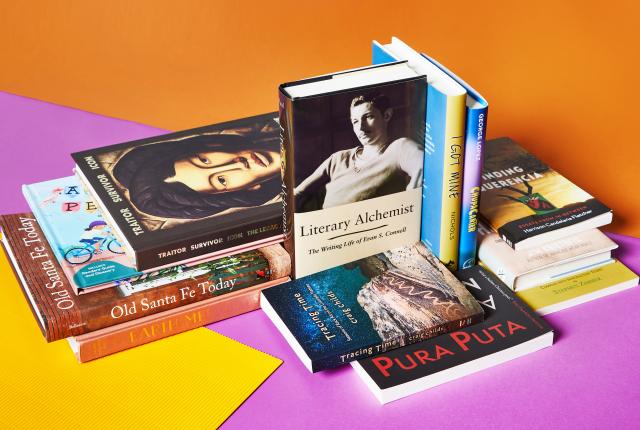 LITERARY
LITERARY
Finding Querencia: Essays from In-Between
Harrison Candelaria Fletcher (Mad Creek Books)
Raised in Albuquerque’s North Valley, Harrison Candelaria Fletcher struggled to divine his identity, stranded somewhere between a Hispanic mother and an Anglo father. He hewed to his maternal roots, but others regarded him as an impostor. His struggle turns lyrical in riverine poems and passages. “Coyote,” the slur that once hurt the author’s soul, appears as a character that eventually turns into an ally, as New Mexico’s landscape, culture, and history play supporting roles. “You sit as a boy on the hardwood floor of your home,” he writes, “beside rocks from the river, deer antlers from the llano, and a castle of Cochiti drums. With knights and monsters, you drift through wood-smoke incense and the water light from the front window. You are flying, or swimming, in a story or a dream, trying hard to never touch down.”
I Got Mine: Confessions of a Midlist Writer
John Nichols (High Road Books)
On January 15, 1965, John Nichols’s first novel, The Sterile Cuckoo, was published. A review in that evening’s edition of The New York Times eviscerated it. Nichols spent all night typing a poisonous letter to the literary critic, which he wisely never sent, and thus began his writing career. “Reactions to it haven’t changed all that much over the last fifty-five years,” he reflects wryly. Regardless, the Taos author, best known for a trilogy that kicked off with 1974’s The Milagro Beanfield War, weaves a spellbinding memoir in I Got Mine. He may be a self-described “amoral selfish narcissist,” as he insists any professional writer is, but he’s also pretty funny, and he’s lived a life worthy of a master storyteller. (By the way, Liza Minnelli was nominated for an Oscar for the movie adaptation of that first novel.)
Pura Puta: A Poetic Memoir
Anna C. Martinez (Casa Urraca Press)
Award-winning slam poet and civil rights attorney Anna C. Martinez’s swaggering, deeply sensual poems honor her trajectory as a Chicana growing up in Española. In her debut collection, 39 autobiographical poems careen through Martinez’s origin stories, as the poet’s indomitable voice recounts the pain of patriarchy, ancestral trauma, and violent love. The tales contained in these free verses are arresting, winding into the bloody glory of childbirth, the libidinous allure of a lowrider, missing and murdered women in Albuquerque, and the thrill of hustling at the pool table. A warm sense of querencia marks Martinez’s descriptions of New Mexico: “adobe/color of home/of acequias run/row to row/barbed-wire fence to barbed-wire fence/century to century and still.”
Literary Alchemist: The Writing Life of Evan S. Connell
Steve Paul (University of Missouri Press)
Dorothy Parker called him “a writer of fine style and amazing variety.” His novels Mrs. Bridge and Mr. Bridge are said to have inspired Lydia Davis, Jonathan Franzen, and Zadie Smith. And his searing biography of George Armstrong Custer, Son of the Morning Star, earned the admiration of Larry McMurtry, who wondered why anyone else would attempt a book on Custer after reading it. Evan S. Connell (1924–2013) was a writer’s writer, a novelist, historian, poet, and loner whose under-recognized work is beloved by those in the know. In this compassionate biography by Steve Paul, who shares Connell’s hometown of Kansas City, Missouri, Connell’s work and life are compellingly examined, all the way to the tree in Santa Fe where his ashes were scattered.
 LAND AND CULTURE
LAND AND CULTURE
Traitor, Survivor, Icon: The Legacy of La Malinche
Edited by Victoria I. Lyall and Terezita Romo (Denver Art Museum/Yale University Press)
An Indigenous translator for Hernán Cortés during his 16th-century overthrow of Mexico’s Aztec people, Malinche has long served as a tabula rasa for interpretation. She has been portrayed as turncoat, seductress, victim, and even La Llorona. The Albuquerque Museum’s door-busting summer exhibition (under the same title as this book) originated at the Denver Art Museum, which also produced this stunning collection of essays and art. Sold into slavery as a child, Malinche used her facility with language to become a trusted adviser. She bore Cortés’s child and thus earned regard—and derision—as the mother of the mestizos, people of European and Indigenous ethnicity. The book gathers essays and poems, as well as four centuries of visual artistic interpretations. It all builds into an indelible impression of Malinche as an Everywoman who did what she could to survive and whose own point of view was not regarded as worthy enough to record while she was alive.
Tracing Time: Seasons of Rock Art on the Colorado Plateau
Craig Childs (Torrey House)
You won’t find GPS coordinates for the Ancestral Puebloan petroglyphs and pictographs that Craig Childs explores in Tracing Time. Instead, he delivers an engaging narrative of a pandemic journey across the Four Corners (where he finds a lot). Archaeologists, anthropologists, and Native leaders offer thoughts on what each spiral, handprint, and floating ghost image might mean, but Childs acknowledges that we may never know why someone living 1,000 or more years ago left these marks—to tell an origin story? Warn of rattlers? Pray for rain? Childs’s literary flair urges the reader on.
New Mexico Ghost Towns
Donna Blake Birchell (History Press)
Even with 90 suggestions of abandoned or barely-there towns to explore, this guidebook can’t fit all the wondrously eerie places that New Mexico possesses. That’s a good thing! Searching for history (haunted or not) can thrill adventurers with tales of tragic murders, lost fortunes, and architectural wonders. Donna Blake Birchell organizes New Mexico Ghost Towns by region and then by county to compress your explorations. Her brief descriptions will compel you to grab the car keys. Take a map, too.
House Gods: Sustainable Buildings and Renegade Builders
Jim Kristofic (University of New Mexico Press)
Jim Kristofic says his book isn’t a how-to guide to sustainable building. It’s about why we should live in homes that offer balance and integrity. Kristofic’s mission to answer that question is anchored in the people and structures of the Taos Valley, where he lives, and informed by his experiences growing up on the Navajo Nation. As he visits straw-bale homes, Earthships, hogans, and adobe cabins from Mora County to Cuba, New Mexico, Kristofic takes us on a journey through northern New Mexico’s most thoughtful dwellings and introduces the inimitable personalities who built them.
Earth Medicines: Ancestral Wisdom, Healing Recipes, and Wellness Rituals from a Curandera
Felicia Cocotzin Ruiz (Roost Books)
A northern New Mexican who eventually relocated to Phoenix, Felicia Cocotzin Ruiz (Tewa, Xicana) has melded her skills as a curandera (a healer who uses native plants), chef, forager, and Ayurvedic practitioner to build a national reputation as a voice for Indigenous wisdom and healthy living. She opens Earth Medicines with tempting recipes for water-rich salads and aguas frescas before moving into skin treatments, breath-enhancing herbal infusions, and more. Her instructions rely on common kitchen tools, and a sunny optimism beams off each page.
 Younger Readers
Younger Readers
ChupaCarter
George Lopez with Ryan Calejo (Viking)
In this update on the classic boy-befriends-monster story, 12-year-old Jorge Eduardo Lopez has been sent to live with his abuelos in boring Boca Falls, New Mexico. He’s not too fond of his new school or the kids who go there, but then he meets Carter, a genial chupacabra who speaks Spanglish and plays a mean game of hide-and-seek. Carter teaches Jorge to appreciate nature. But can Jorge keep his new pal a secret? Comedian George Lopez wisely tapped award-winning author Ryan Calejo for this spirited middle-grade series, and its first entry is a heart-filled testimony to the power of friendship.
A Journey Through New Mexico
Judy Alderete García (Alderete García)
This lively bilingual primer on New Mexico history and traditions includes a glossary, discussion questions, and even a biscochito recipe. Droll illustrations by the author’s brother, acclaimed artist Eric J. García, accompany stories of santeros and matanza feasts, a roundup of Christmas and Lenten customs and foods, and shout-outs to New Mexico legends like musician Al Hurricane and author Rudolfo Anaya. It’s a fine foray into what makes the state special that’s useful for readers of all ages.
Herizon
Daniel W. Vandever and Corey Begay (South of Sunrise Creative)
Herizon might look like a simple picture book about a Diné girl’s adventures on the Navajo Nation. But it subversively addresses female empowerment, intergenerational strength, and the joy of an adventuresome heart. Illustrator Corey Begay interprets Daniel W. Vandever’s storyline of a girl who leaves her grandmother’s home wearing a ch’ah (scarf), on a mission to rescue the family’s sheep from coyotes. The scarf transforms into a sail, tent, flying carpet, slingshot, and leash. The final image, of the girl using the scarf to tie her hair into a traditional bun, underscores Vandever’s endnotes about harnessing the power of the past to improve his tribe’s future.
Where Butterflies Fill the Sky: A Story of Immigration, Family, and Finding Home
Zahra Marwan (Bloomsbury)
A failure to apply for citizenship has left little Zahra’s family “stateless” in Kuwait, which prompts them to flee toward a different desert, this one in Albuquerque. Portraying her childhood journey in both words and watercolors, Zahra Marwan weaves a fish-out-of-water tale that invites conversations about immigration. Our heroine endures an aching loneliness before finding connections to her former home in elements familiar to any New Mexican: the sound of a guitarrón, a fiesta of dancers, and a sky made joyous by hot-air balloons.
An Alphabet Pet Parade in Topsy-Turvy Town, Population 26
Judith E. Torres (ASHA Press)
Zoe has her heart set on a getting a furry friend, and she’s hoping the alphabet-themed pet parade in her town will give her some inspiration. As Christiane Engel’s illustrations of the menagerie march across each page, from A to Z, Torres’s nimble wordplay toys with readers’ expectations. “Melvin M. Meek, the bravest man for miles around,” brings his monkey, while Petunia P. Pool, who fears water, pets her pot-bellied pig. Torres, who was inspired by her childhood memories of the annual Children’s Pet Parade in her hometown of Santa Fe, has penned a vocabulary-expanding abecedary with New Mexico flavor.

History
All in a Day’s Riding: Stories of the New Mexico Range
Compiled by Stephen Zimmer (Sunstone Press)
Cimarrón rancher and historian Stephen Zimmer focuses on the early Anglo era of cattle and cowboys, roughly 1865 to 1900. The anthology gathers essays by well-known writers such as Agnes Morley Cleaveland, Eugene Manlove Rhodes, Ernest Thompson Seton, and N. Howard (Jack) Thorp, and together they describe a world of leather-hard cowboys and remarkably intelligent horses. Each writer makes clear a salient point: Cowboying is hard work. Thorp writes viscerally of a stampede amid a storm: “We were wholly unable to stop the cattle. They ran for miles without a sign of a split. Then when the split did come, it was so dark that I didn’t know it till a flash of lightning showed I was riding in the lead of exactly three steers … The air had turned freezing cold.”
Old Santa Fe Today: A History & Tour of Historic Properties
Audra Bellmore (Museum of New Mexico Press)
New Mexico Magazine’s office occupies part of the Lew Wallace Building, built in 1887 as part of St. Michael’s College, on the edge of Santa Fe’s Barrio de Analco Historic District. Pick any neighborhood near the Santa Fe Plaza and you just might burst with questions. What did that gallery used to be? What’s significant about that church? The Historic Santa Fe Foundation knows and shares the bounty in this third edition of Old Santa Fe Today, featuring new research, color photographs, and historical ones. An essay by architectural journalist Paul Weideman lays a brief historical record before the book plunges into descriptions of important buildings (and cemeteries). Whether you live in the City Different or just enjoy visiting, this book proves itself indispensable. Word to the wise: Get on the foundation’s mailing list for news of guided tours. And if the tour of artist homes is ever repeated? Don’t delay. Buy the ticket. Thank us later.
Check out other books and authors we covered this year at nmmag.us/books2022.


